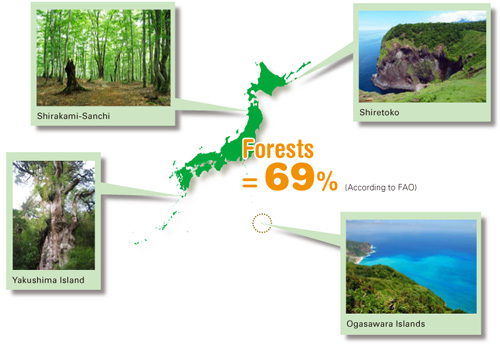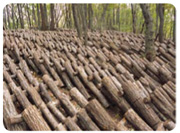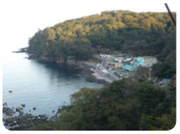Home > Highlighting JAPAN > Highlighting Japan JULY 2012 > The Forests
Highlighting JAPAN
[SERIES] STUDENTS'CORNER: Ways of Japan
The Forests

Japan is home to four forests that are registered as natural world heritage sites. The first of these is Shiretoko in Hokkaido, which is a veritable treasure trove of rare species such as the brown bear and Steller's sea eagle. Shirakami-Sanchi meanwhile straddles Aomori and Akita Prefectures and is one of the world's largest natural beech forests. The other two forests are the Ogasawara Islands, which are actually part of Greater Tokyo and were registered as a World Heritage site last year, and Yakushima Island in Kagoshima Prefecture. Although all four forests are home to indigenous species that cannot be found anywhere else, Yakushima for one is best known for its Yakusugi cedar trees. The forest's biggest tree is the Jomon Cedar, which is 25 meters tall, 16.4 meters wide and estimated to be around 7,200 years old.
Japan may have used vast quantities of wood throughout its history, for purposes such as buildings and fuel, but it still has a huge amount of forestland remaining. As well as the country's tree-friendly climate and terrain, which is too mountainous to easily fell trees, this is due to Japan's long-standing commitment to forestation (with tree planting activities thought to date back to the fifteenth century). Under Japanese law and various other systems in place to protect forestland, a new sapling has to be planted for every tree that is cut down, so that it can grow back in to another tree. As a result, the area of Japan covered by forestland is the same now as it was thirty years ago, with more or less the same number of trees too.

Credit: AFLO
Q1: The wood in the photo is known as "hodagi," but what it is used for?
A. Building houses
B. Growing mushrooms
C. Fuel

Q2: It has long-since been prohibited to cut down trees in certain areas along the coast of Japan, but why is that? (The photo shows a forest on the Manazuru Peninsula in Kanagawa Prefecture.)
A. To preserve parkland for walkers
B. To provide insects for food
C. For the fishing industry
© 2009 Cabinet Office, Government of Japan






